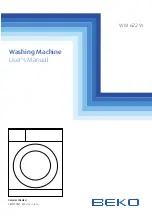
59
Upper knife and
Lower knife
Worn or blunt knives will cause the material to
pucker or stitches to be uneven.
•
If one strand of thread can be cut off in front of or
at the rear of the knife, the knife is sharp enough.
•
When the knives are blunt, replace them as
described on the next page. Be sure to unplug the
power supply cord from the wall outlet before
removing the knives.
Retracting upper knife
Turn the upper knife adjustment dial to
1
→
2
so
that the upper knife will not be used.
Cuchillas superior e
inferior
Si las cuchillas están gastadas o desafiladas,
pueden ocasionar arrugas o puntadas desigua-
les.
•
Si una sola hebra puede ser cortada delante o
detrás de la cuchilla, quiere decir que la cuchilla
está bastante afilada.
•
Cuando las cuchillas están desafiladas, conviene
cambiarlas como se describe en la página si-
guiente. Sin embargo, asegúrese siempre de
desconectar el cordón de la máquina de la toma
de corriente antes de retirar las cuchillas.
Meter la cuchilla superior.
Gire el disco de ajuste de la cuchilla superior a la
posición
1
→
2
de modo que no se use la cuchilla
superior.
15
La parte superior de la cuchilla superior saldrá por
encima de la placa de la aguja.
•
Emplee la parte saliente de la cuchilla superior
como guía para el tejido.
Ajuste la palanca de la anchura de puntada para
mover la cuchilla superior a la posición de guía
deseada.
The top part of the upper knife will stick out above the
needle plate.
•
Use the projecting part of the upper knife as a
guide for the fabric.
Adjust the stitch width lever to move the upper knife
to the desired guide position.
NOTE:
Turn the upper knife adjustment dial only while the
needle is at its lowest point.
NOTA:
Gire el disco de ajuste de la cuchilla superior sólo
cuando la aguja esté en el punto más bajo.
R
6
5
2
1
Summary of Contents for 925D
Page 33: ...26 5 1 2 3 5 7 4 6 8 7 8 1 5 4 1 2 3 2 ...
Page 35: ...28 5 1 2 3 5 7 4 6 8 7 8 8 7 4 3 1 5 4 1 2 2 1 ...
Page 73: ......








































